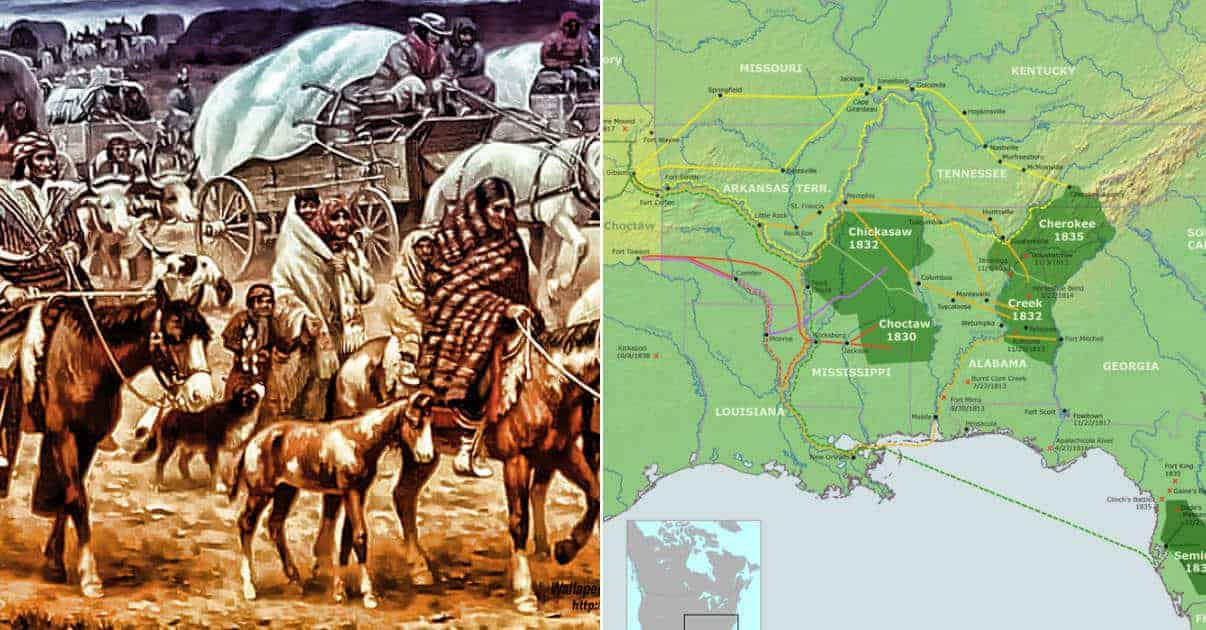
The Choctaw Removal
The Choctaw traditional lands were in the Deep South, in parts of what is now Mississippi, Louisiana, and Alabama. In 1831 their lands comprised approximately 11 million acres and these were ceded to the United States in the Treaty of Dancing Rabbit Creek, in which the Choctaw agreed to removal to the Indian Territory. The Choctaw received 15 million acres of land there, and any Choctaw head of a family who wished to become a citizen of the United States and remain was allowed to do so. It was also agreed that they could retain their citizenship as a Choctaw. About 5,000 Choctaw remained in Mississippi under these terms.
Jackson hoped to use the Choctaw removal as a model for future tribes. George Gaines, an agent with experience trading with the Choctaw and one of the negotiators of the Treaty of Dancing Rabbit Creek, was assigned the task of removing them to their new lands. A three phase removal process was established, beginning in the autumn of 1831, before the Senate had ratified the treaty. Beginning in early November the first phase had the Choctaw departing from mustering points at Memphis and Vicksburg. When harsh weather and floods prevented their traveling by wagon Gaines arranged for steamboats to carry them up the Arkansas River to Arkansas Post.
There the river became blocked with ice floes rendering steamboat travel impossible. Supplies began to run out as they had not planned on being stationary for a prolonged period. Gaines requisitioned forty wagons to carry the Choctaw to Little Rock. The group which had started from Vicksburg became lost in the swamps. That winter a severe blizzard struck, creating further difficulties in travel and reducing supplies still further. In 1832, as another group of Choctaw migrated west, cholera epidemic swept across the south, and fear of disease among the Indians led to many towns denying them the right to pass through, forcing them to go around, lengthening their journey.
The Choctaw who remained in Mississippi didn’t fare much better, as Jackson had foreseen. They faced legal harassment as a means of taking their land, as well as physical attacks and the destruction of their property. Many white settlers of Mississippi considered the Choctaw to be inferior to Blacks, and treated them accordingly. Gradually the number of Choctaw in Mississippi was reduced through sickness, or through members of the tribe finally giving up and moving elsewhere. Many moved to the Indian Territory (Oklahoma is a Choctaw word).
About 15,000 Choctaw and an additional 1,000 Black slaves they owned were removed to the Indian Territory. It was the Choctaw who gave the trip the name “Trail of Tears.” Estimates of their dead range from 2,500 to 6,000 during the migration. The migration was completed in 1833 although members of the Mississippi Choctaw continued to remove to Oklahoma into the twentieth century. It has since been alleged that the tribe’s leaders had agreed to the Treaty of Dancing Rabbit Creek after being bribed.

